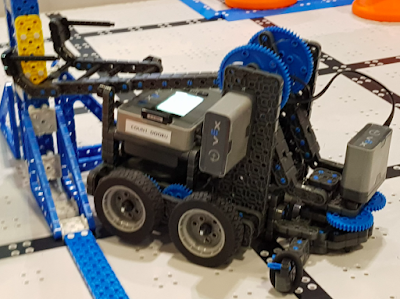March of the robots
Author:
Go to Source
 |
| Photo by Steve Wheeler |
Anyone who has ever attended the BETT Show will tell you it is vast, chaotic and very commercial. The latter is inevitable, because BETT is a free-entry event, and someone has to pay to make sure the four day education show happens. BETT was bigger than ever this year, with more vendors and more visitors, overspilling into an additional space across the corridor from the usual trade show venue.
As I wandered around the show this year, skilfully sidestepping the ministrations of a host of staffers dressed up as grizzly bears, transformers and astronauts, all trying to sell me their latest shiny toys, and politely refusing their offers of glossy brochures and leaflets, I noted that the most predominant displays seemed to feature robots. Yes, BETT 2019 definitely featured more robots than just about any other educational technology.
There are technologies and tools, and then there are toys. A few of the robots I saw were potentially useful tools to promote interesting and engaging pedagogy, but some seemed to do nothing more than follow a black line around in circles. The ones that were actually programmable came in various shapes and sizes, and many had the potential to encourage coding, computational thinking and problem solving. I could also envisage how they might be deployed in classrooms to encourage students to actively pursue a range of learning in diverse subjects.
Perhaps the most impressive of the range of educational robots on offer was the unit pictured above. According to its company website VEX Robotics provides tools to inspire problem solvers of the future. Students design and build similar robots from kits, investing creativity into their designs, and then they program them to perform a variety of tasks that are mapped against the curriculum. There is plenty of guidance and support o offer for teachers, and the ultimate goal is to get children interested in learning maths, science and other subjects through building, making and problem solving. This resonates with the constructionist beliefs of Seymour Papert, Mitch Resnick (who spoke at BETT this year), and also those involved in FABLabs and the makerspace movement.
I just wish we were able to build and program robots when I was in school. I would have turned up for every lesson.

March of the robots by Steve Wheeler was written in Plymouth, England and is licensed under a Creative Commons Attribution-NonCommercial-ShareAlike 3.0 Unported License.
